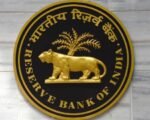As the U.S. dollar tumbles, central banks around the globe are caught in a delicate balancing act. The uncertainty surrounding U.S. fiscal policies has triggered a dramatic shift away from the dollar, raising important questions: Should they devalue their own currencies to maintain competitiveness or hold steady and risk further economic fallout?
The dollar’s slump has been nothing short of striking. As of April 2025, the dollar index has dropped more than 9% since the start of the year. This significant decline has sent ripples across global markets, impacting everything from currency values to inflation rates, and central banks are struggling to keep pace. The devaluation of the dollar is not just a financial blip—it’s reshaping the landscape for economies everywhere.
With the dollar’s weakening, a flight of capital away from U.S. Treasurys and the greenback has ensued. The ongoing volatility is causing global investors to reconsider their positions. Bank of America’s recent Global Fund Manager Survey reveals that 61% of major investors predict further declines in the dollar’s value in the next year—marking the most pessimistic outlook for the dollar in two decades.
But while the devaluation of the dollar is alarming, it’s not the only thing keeping central banks awake at night. There’s a domino effect of rising currency values in other regions, particularly in the safe havens—such as the Japanese yen, Swiss franc, and euro—that have appreciated significantly against the dollar. This shift has left central banks of major economies walking a tightrope. They must navigate the complicated decision: Should they allow their currencies to appreciate to counter the greenback’s fall, or take steps to devalue their own money to stay competitive in global trade?

The Ripple Effect: What’s Happening to Emerging Markets?
The weakening of the dollar has not only affected developed economies but has created even more turmoil in emerging markets. Particularly in Asia, where inflation and debt have long been pressing issues, the dollar’s slide is forcing governments to weigh their options. On one hand, some countries could benefit from an appreciating currency in the short term. But the rising value of local currencies could make their exports more expensive, hurting their global competitiveness.
As a result, currency devaluation has become an increasingly important tool for central banks in emerging markets, especially those grappling with high inflation, massive debt loads, and risks of capital flight. However, the risks of devaluation are high. In an era of capital mobility, the move could backfire, prompting further capital outflows, higher inflation, and economic instability.
“Emerging markets face high inflation, debt, and capital flight risks, making devaluation dangerous,” said Wael Makarem, a financial markets strategist at Exness. The delicate balance lies in avoiding a devaluation spiral that can cause more harm than good. And while countries like Japan have historically relied on currency depreciation to boost exports, this tactic might not work as effectively as it once did.
The Global Tightrope Walk for Central Banks
For most central banks, the situation is complex. The ideal scenario would be to maintain stable exchange rates while combating inflation. But with the U.S. dollar’s plunge, the value of many local currencies has risen, presenting central banks with a new challenge. A stronger currency can hurt the competitiveness of exports, increasing the risk of an economic slowdown.
Countries like the European Union, Japan, and Switzerland, where currencies are often seen as safe havens during times of dollar weakness, find themselves in a paradox. The stronger their currencies get, the more difficult it becomes for their exporters to stay competitive in the global market. For example, Japan’s yen has been rising steadily, putting additional pressure on its export-driven economy.
Yet, there is a clear concern that artificially devaluing currencies to maintain export growth could lead to further economic strain. A rapid devaluation could destabilize the economy, increase inflation, and even provoke retaliatory measures from trading partners, leading to an international currency war.
What’s at Stake for Global Trade?
The stakes of these decisions are significant. Countries whose economies rely on exports are especially vulnerable to the changes in the dollar’s value. For instance, nations in Asia, including China and India, are in a difficult position. China, with its vast foreign reserves, could benefit from a weaker dollar but has to be cautious about the global consequences of any intervention. In contrast, India, with a growing economy but significant inflationary pressures, faces more risks from rising currency values.
As the global supply chain becomes more interconnected, fluctuations in exchange rates—whether driven by the dollar’s fall or deliberate actions by central banks—can cause lasting disruptions. Higher costs of imports and volatile currency values add layers of uncertainty for businesses and governments alike.
Looking Ahead: A Crossroads for Central Banks
As the dollar falters and central banks around the world find themselves on a precarious tightrope, the question remains: Should they devalue their currencies, or ride out the storm and risk a broader economic crisis? What is certain, however, is that policymakers must tread carefully.
A wrong move could lead to high inflation, reduced competitiveness, and even capital flight, potentially plunging many countries into economic turmoil. On the other hand, inaction could lead to slow growth and lost market opportunities as global competitors capitalize on a weakening dollar.
The coming months will likely reveal how central banks approach these challenges and whether coordinated efforts or individual actions will help stabilize global markets—or further destabilize them.








